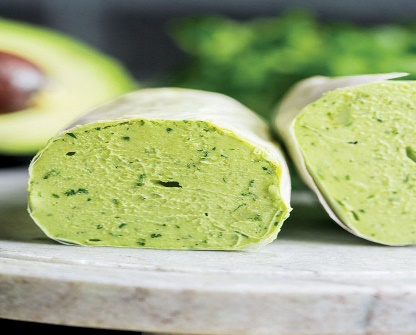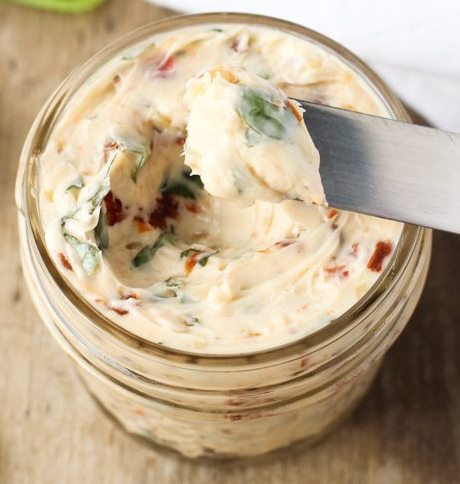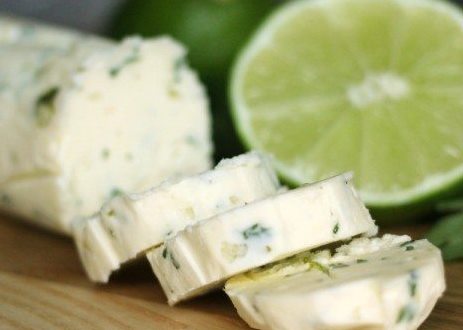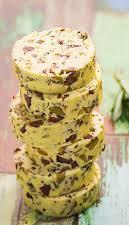Facts about Butter & Ghee
Butter is a dairy fat made by churning the cream of milk containing 80% fat, 20% water and whey (milk solids lift from separating process). It is mostly made from cow’s milk but can also be made from buffalo milk, sheep’s milk etc. It is obtain by churning milk or cream to separate the fat globules from the buttermilk.
- Since butter is in saturated fat category, therefore it will be solid at room temperature( 20 degree C) and melts at 32 to 35 °C (90 to 95 °F) and The smoking temperature of butter is 127ºC. It generally has a pale yellow color,but varies from deep yellow to nearly white.
How butter is made:-
Butter is produced by churning cream until the fats separate from the liquid (buttermilk) and the butter is in a semi-solid state. Farm made butter uses the cream directly from whole milk whereas commercially made butter is made by extracting small amounts of cream from whey, a by-product of cheese-making, using large centrifuges.
- Pasteurizing of cream: – Cream is pasteurized for 2-4 seconds at 95º C and then the temperature is lowered to 4-5º C and that is kept for several hours to ensure uniform hardening of fat particles.
- Ripening: –When the end product is going to be Lactic butter, only then this step is carried out, in which bacterial culture is added. In this case, the holding temperature will be 15-18º C for 3-4 hours before being cooled to 4-5º C. This gives butter a good flavour and the stage is omitted while making sweet cream butter.
- Churning: -It is carried out in big stainless steel containers holding about 100 gallons of cream and the internal churners pass through the cream. This breaks the layer of fat solids which are released and are combined to form a large group of butter fat. After about 30 minutes of churning the butter gets separated from butter milk and floats to the surface.
- Washing & Salting:- The butter grains are now washed with ice cold water to remove any butter milk left on the surface of each grain, in order to maximize the keeping quality.
Salting is carried in two ways:
- By adding fine grains of dairy salt.
- By dipping butter grains into brine solution (salt + vinegar) for 10-15 minutes and allowing the butter grains to absorb it.
Salted Butter vs Unsalted Butter
Salted butter is simply butter that contains added salt. In addition to giving a saltier taste, the salt actually acts as a preservative and prolongs the shelf life of the butter. Salted butter is perfect for spreading over crusty bread or melting over homemade pancakes or waffles.
- Whereas Unsalted butter contains no added salt. Unsalted butter has a shorter shelf life than salted butter. In terms of flavor, unsalted butter has a more pronounced mellow sweetness than salted butter. It’s best used in baking.
CULINARY PREPARATIONS WITH BUTTER
Clarified butter, also known as ghee in Indian cooking, is better for high-heat cooking because it has a smoke point of between 450°F and 475°F, as compared with about 300°F/150°C for whole unclarified butter. It has a longer shelf life than ordinary butter and can be kept at room temperature.
- Butter is an emulsion of fat and liquid.
- Butter provides richness and mouth feel.
- Butter is versatile by itself, as an emulsifier in sauces, or as a cooking medium.
- Whole butter will burn more easily because of the milk solids.
- Clarified butter removes the milk solids which raises the smoke point and extends the shelf life.
- Butter is browned intentionally in some culinary preparations to add flavor.
Uses of Butter
- As a spread for bread, toast and scones.
- As a basic ingredient in pastry-making and cake-making.
- Used as an accompaniment (compound butter).
- To enhance the taste and flavour of soups and sauces.
- As a cooking medium (The smoke point of butter fat is only 127-130°C so a vegetable oil should be used when high cooking temperatures are required).
- For butter sculptures.
- Butter is available in 10 gm, 100 gm, and 500 gm packs in the market.
What is Compound Butter?
Compound butters are mixtures of butter with other ingredients like fresh or dried herbs, Spices etc to enhance flavor in various dishes. The butter is then wrapped in butter paper and chilled to become firm enough to cut or slice. Compound butter is used in soups, melted on the top of meat & vegetables, used in finishing of various sauces, spread on bread, melted on corn on the cob etc.
| Beurre Maître d’Hôtel :-is the mother of all flavored butter and a French classic. It is traditionally served as a pat on top of a hot steak. It’s equally good on roast chicken, mashed potatoes, and grilled vegetables. |  |
| Avocado Butter is a rich mixture that is particularly fine on salmon or other fish. Use about 1/2 cup chopped fresh basil leaves for every 1/2 cup butter. |  |
| Italian compound butter– it is infused with sundried tomatoes, garlic, and basil. Or set it out with your next cheese plate as a spreadable option. |  |
| Parsley lemon butter– it is made with Chopped parsley & flavour with Lemon juice & lemon zest. It is best used in grilled fish or with boiled or steamed vegetables. |  |
| Rosemary & olive compound butter- it is made with dry or fresh rosemary herbs and black or green chopped olives .It is best used in grilled fish or with boiled or steamed vegetables. |  |
What Is Ghee?
Ghee results from separating the milk solids and the butterfat in processed butter while cooking out the water. It’s widely used in Indian cuisine and ayurvedic traditions, but it deserves a place in any modern American kitchen also.
Ghee performs better than butter in high-heat cooking since it has a smoke point of 450 F, compared to 350 F for ordinary butter. The fat most commonly used in Indian cooking, ghee can work as the butter or oil in most recipes, no matter the origin. Ghee can be swapped for vegetable oil or coconut oil in baked goods or used for sautéing and deep-frying. Or simply melt it and spread it on bread for a snack, pour it over popcorn, or drizzle it on vegetables before serving.
Culinary use of Ghee-
Ghee is an ideal fat for deep frying because its smoke point (where its molecules begin to break down) is 250 °C (482 °F), which is well above typical cooking temperatures of around 200 °C (392 °F) and above that of most vegetable oils.
It is one of the versatile fat which is prepared at home in every households in India and extensively used in making all types of vegetable preparation, sweet preparation etc.
One of Ayurveda’s most treasured foods, ghee has incredible healing properties. From our dal, khichdi to halwas and chapatti; ghee is one kitchen staple we are never getting enough of. In fact, swapping ghee with fattening refined oils has perhaps been one of the biggest blunders of the modern cooking.
Content Reference:-
The above content has been compiled after referring various culinary books, Research Papers, Research articles, Food magazines, news papers, top culinary websites, Govt websites, personal interaction with renowned chefs from various hotel brands like The Ashok Group of hotel, ITC, Oberai, Leela, Park Hotels & various IHM Faculties, Nutritionists etc. & many more. The picture which i have used has been taken from the open source website .Some of the important website referred for the above content are:-
